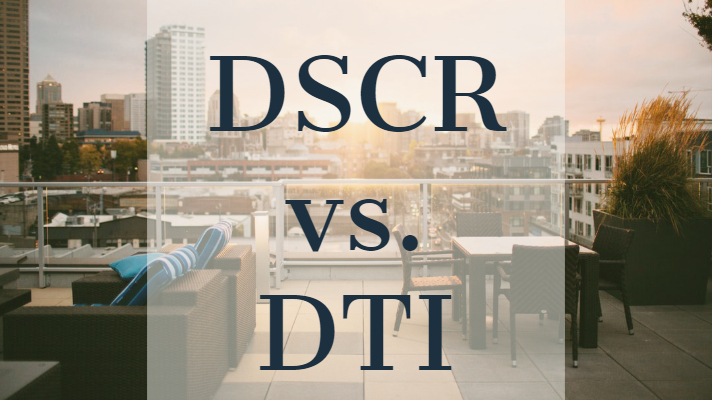Debt Service Coverage Ratio vs. Debt To Income
When applying for a residential or commercial loan it is important to understand the difference between DSCR and DTI. When it comes to residential lending, majority of the time the loan originator will do an analysis to make sure that your debt doesn’t exceed your income called a Debt to Income Ratio. However, when lenders do an analysis on commercial properties they use a debt service coverage ratio. In this article we will explain the difference between the two and the pro’s and con’s for both.
Debt to Income or DTI
When loan originators are considering loaning a client money on residential homes such as a townhouse, single family home, condo, duplex, etc. they use what is called Debt to Income. Investopedia defines DTI as a ratio of a personal finance measure that compares an individual’s debt payment to his or her overall income. A good rule of thumb originators use when analyzing this ratio is, that they highest debt to income a borrower can have is 45%.
You can calculate your debt to income by simply adding up all of your debt payments per month and divide that by your income per month. Your percentage you come up with is your DTI ratio. The more debt you take on the less amount of money a bank is willing to lend you. Making it harder for investors to qualify for multiple loans. The benefit that comes with DTI is the higher Loan to Value ratio that FNMA is willing to accept. Meaning that you can qualify to purchase a house with very little money down.
Debt Service Coverage Ratio or DSCR
Now that we have talked about DTI, lets get into DSCR. When commercial lenders underwrite their loans they use an analysis called a Debt Service Coverage Ratio or simply DSCR. This ratio is found by taking the properties Net Operating Income and Dividing this by the annual debt service payments. So for instance if your net operating income generated from your Multifamily property was $150,000 and your annual debt payments was only $100,000 your debt service coverage ratio would be a 1.5. Most lenders typically look to see a property has at-least a 1.25 DSCR. Meaning after your annual debt payments you generate a 25% profit.
Why this form of analysis is so popular with investors is because their personal debt isn’t taken into consideration. Your Fico credit score, personal debt, and outside source of income all play a factor in the likeliness that you qualify for a loan. The most important factor a loan originator will look at is the properties Debt Service Coverage Ratio. One con that comes with commercial lending is typically the Loan to Value is much lower. Lenders want to see at least a 25%-30% down payment or “skin in the game” to qualify for a loan.
Summary
In conclusion, both of these ratios can determine the worthiness a borrower presents in qualifying for a loan. However, when it comes to residential lending, most lenders will use a DTI ratio. Now for commercial lending, loan originators tend to use a Debt service coverage ratio. Both analysis are very important on determining if you will be approved for the loan. We suggest you do your research before applying for a home loan or a commercial property. If you would like to speak to an expert in commercial lending please click on this link.














